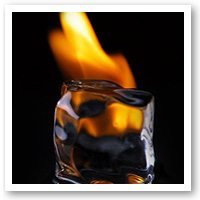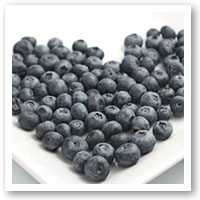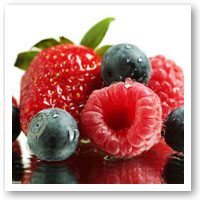Ice or heat for injuries?
 A question I am often asked in clinic is “Should I use ice or heat on this injury?”.
A question I am often asked in clinic is “Should I use ice or heat on this injury?”.
The icing controversy
The conventional viewpoint is that it’s best to ice an injury in the first few hours and to apply heat to a chronic (long-lasting) injury. Ice, along with rest, compression and elevation (R-I-C-E), is seen to limit swelling and inflammation for the first 24-48 hours following an injury. However, the use of ice has recently been questioned by some in Western medicine, and has never been advocated in Traditional Chinese Medicine. In clinic, what we tend to see is that people continue to ice injuries long after this initial period, and that this can lead to problems.
This is particularly true for tendons and ligaments, as these structures naturally have less blood supply than muscles. So ligament and tendon injuries are particularly likely to become longstanding if we interfere with the already low blood flow.
So among some sections of the sports injuries world, for tendon and ligament injuries, RICE has been superseded by M-E-A-T (movement – exercise – analgesia (pain relief) – treatments (that promote blood flow).
Conventionally, ice application is recommended immediately after an injury under the premise that it helps the coagulation process, limiting bleeding from damaged blood vessels. The second reason put forward for icing an injury is that ice can ease inflammation. Thirdly, it has a numbing effect so can help relieve pain.
So let’s look at these aspects in turn.
Stopping bleeding immediately after an injury certainly makes sense. But how long is the window of opportunity for this? One animal study suggests that critical period for preventing secondary injury (from swelling due to bleeding around the injury) may be much shorter than we originally thought – somewhere from 30 minutes to 5 hours, with the first 30 minutes being the most critical.
It’s generally accepted that too much inflammation is a bad thing. But some animal research shows that interfering with inflammation after trauma may be detrimental. It could actually slow down healing. Researchers have found that injured cells produce the inflammatory hormone IGF-1 (insulin-like growth factor-1), which significantly increases the rate of muscle repair. In mice bred to not produce IGF-1, healing after an injury was slower than in normal mice.
How about pain relief? In 2004, researchers looked at all the available studies to try to determine the effectiveness of ice after injuries and surgery. As part of this, they looked into pain relief. They found that while ice helped to reduce pain, the majority of studies showed that compression alone was just as effective. They also noted that there wasn’t much good-quality research into this area.
How Traditional Chinese Medicine sees cold
In Chinese Medical theory, too much cold is not a good thing. In fact it is seen as the root of many problems, with the cold becoming lodged in the tissues, leading to ongoing stiffness and pain.
Of course, in ancient China there were no freezers. Only those who lived in cold or mountainous regions would even have had access to ice. So people needed other ways to treat injuries. Traditional Chinese Medicine has a whole toolkit of techniques to help heal injuries. For acute injuries, a form of massage incorporating acupressure points (tui na), as well as acupuncture and moxibustion (a herbal heat treatment on specific points) can help relieve pain and reduce swelling. For chronic injuries that are slow to heal, as well as the above therapies, techniques such as Tai Chi can be very useful in gently promoting movement and freeing up the area. These forms of treatment correspond much better to the MEAT viewpoint than the ICE protocol – Tai Chi for movement and exercise, acupuncture for analgesia (pain relief), and acupuncture/massage and moxibustion for treatments that promote blood flow, thereby promoting rather than hindering the body’s natural healing mechanisms.
How does heat help after an injury?
Heat is certainly useful in the chronic phase of an injury, as it relaxes the area, promotes blood flow and relieves pain. I generally recommend patients apply warm packs after any swelling has gone down. Another approach is to use ginger soaks or compresses, which also have a warming action. [Link to ginger poultice article]
When used correctly, heat is also very useful in the acute phase of an injury. If you come to see me in the first couple of days after minor trauma, I will perform a full assessment of the injury. Then I will usually burn small cones of moxa, derived from the leaf of the mugwort plant, to apply heat to specific points around the site. I can also teach you how to use this technique at home between clinic visits, to maximise the rate of healing. When used in this way, moxa actually has a slight cooling effect (by encouraging local sweating), but is much gentler than ice. It encourages local blood flow and reduces pain, allowing you to gradually get back to the activities you enjoy. Other moxibustion techniques are useful once the inflammation has started to subside and we are concentrating on regaining range of motion.
Gentle acupuncture using very fine needles at specific points is also helpful in triggering the body’s healing mechanisms.
Heat or cold for injuries – summary.
- See if you can avoid ice if possible, especially for injuries likely to involve ligaments and tendons rather than muscles – in other words the sinewy parts of the body: ankles, knees, wrists/hands. If you are going to use ice, restrict it to the first 24-48 hours. Make sure any cold compress / ice pack is well wrapped in a towel to avoid injuring the skin from excessive cold. Use for no longer than 20 min at a time.
- Heat is more useful after this stage, along with gentle mobilisation, depending on the extent of the injury. Be guided by your body and stop any movements that make the pain worse.
- If you can get in to see an acupuncturist in the first day or so after the injury, this is very useful and may allow you to avoid using ice and speed up recovery.

 Hypertension and high cholesterol are both a major risk factor for heart attack and stroke. These conditions are largely a result of poor diet and lifestyle choices, however there certainly is also a large genetic link with some cases.
Hypertension and high cholesterol are both a major risk factor for heart attack and stroke. These conditions are largely a result of poor diet and lifestyle choices, however there certainly is also a large genetic link with some cases.
